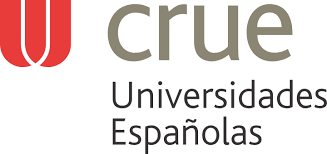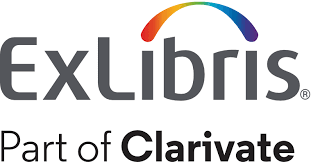Social Networks: Risks and challenges for the academic community of Police colleges
DOI:
https://doi.org/10.22335/rlct.v15i3.1857Keywords:
Cyberspace, cybersecurity, social networks, risks, education, preventionAbstract
The use of social networks by high school students from National Police schools in Bogotá includes the identification of possible gaps in cybersecurity issues, despite programmes and strategies related to responsible use when browsing cyberspace. This research is based on the comprehensive-interpretive (sociological) paradigm with a mixed approach of qualitative predominance. A documentary review, a student survey and an in-depth interview with parents and speakers were carried out. The findings were grouped into two categories; cybersecurity and education. The results of the survey showed hyper-connectivity on the part of the students; the interaction carried out through social networks, especially through the exchange of photos, videos, sharing statuses and making video calls. The findings of the interview express that, although each educational establishment is autonomous, among parents, caregivers and teachers an expressly defined route is not clear to follow when evidencing emerging dangers to the use evidenced in social networks. There is also a lack of greater co-responsibility when identifying certain types of behaviour that threaten students, given that some parents consider that it is an issue that the school should take care of, while teachers believe that it is the parents' responsibility. In conclusion, the need to assess the degree of acceptance, the effectiveness and the scope of strategies developed by schools and private or government entities, with respect to raising awareness on cybersecurity issues and responsible use when browsing the Internet, is revealed.
Downloads
References
Álvarez, I., Muñoz, P., & Mercedes, G. (2021). Habits of use of social networks in adolescence: educational challenges. Revista Fuentes, 23(3), 280-295. https://doi.org/10.12795/revistafuentes.2021.15691
Castañeda, L., & Gutiérrez, I. (2010). Redes sociales y otros tejidos online, para conectar personas. MAD EDUFORMA. https://www.researchgate.net/publication/261449561_Redes_sociales_y_otros_tejidos_on-line_para_conectar_personas
Cayón, J., & García, L. (2014). La importancia del componemte educativo en toda estrategia de ciberseguridad. Revista Estudio en Ciberseguridad y Defensa, 9(18), 5–13. https://esdegrevistas.edu.co/index.php/resd/article/view/9
Colás, P., González, T., & Pons, J. D. (2013). Young People and Social Networks: Motivations and Preferred Uses. Revista Comunicar, 40(1), 15-23. https://doi.org/10.3916/C40-2013-02-01
Contreras, R., & Ugaldes, C. (2022). Adolescentes en la era de las redes sociales. InCom-UAB Publicacions. Universitat Autònoma de Barcelona. https://ddd.uab.cat/pub/llibres/2022/257478/ebookInCom_22.pdf
Departamento de Planeación. (abril de 11 de 2016). CONPES 3855. https://colaboracion.dnp.gov.co/CDT/Conpes/Econ%C3%B3micos/3855_Credito_San_Andres_VPublicaci%C3%B3n.pdf
García, A., Basilotta, V., & López, C. (2014). ICT in Collaborative Learning. Revista Comunicar, 42(1), 65-74. https://doi.org/10.3916/C42-2014-06
Giant, N. (2016). Ciberseguridad para la i-generación. Madrid, Narcea.
Gutiérrez, I., & Acosta, L. (2015). Educación para la vida: los jóvenes y el sexting. https://recursos.educoas.org/publicaciones/educaci-n-para-la-vida-los-j-venes-y-elsexting
Ho Yu, C. H. (2009). Book Review: Creswell, J., & Plano Clark, V. (2007). Designing and Conducting Mixed Methods Research. Thousand Oaks, CA: Sage. Organizational Research Methods, 12(4), 801-804. https://doi.org/10.1177/1094428108318066
Jiménez, V. (2020). Triangulación metodológica cualitativa y cuantitativa. Revista Sobre Estudios E Investigaciones del Saber Académico, 14(14), 76-81. https://revistas.uni.edu.py/index.php/rseisa/article/view/276/231
Ministerio de Educación Nacional. (MEN) (s.f.). Plan de Estudios. https://www.mineducacion.gov.co/1621/article-79419.html
Montoro, E., & Ballesteros, M. (02 de junio de 2016). Competencias docentes para la prevención del ciberacoso y delito de odio en Secundaria. Revista Latinoamericana de Tecnología Educativa, 15(1), 131-142. http://hdl.handle.net/11441/66102
ONTSI. (2022). Brújula, Beneficios y riesgos del uso del internet en las redes sociales. Ministerio de Asuntos Económicos y Transformación Digital. Madrid. https://doi.org/10.30923/094-22-009-2
OPS. (11 de marzo de 2020). La OMS caracteriza a COVID-19 como una pandemia. https://acortar.link/z4tkT8
Papaz Red de padre y madres. (2011). Informe 2011. https://www.redpapaz.org/wp-content/uploads/2016/12/informeredpapaz2011.pdf
Pinto, L. (2019). Rediseñar la escuela para y con las habilidades del siglo XXI. Argentina, Fundación Santillana. http://www.empresariosporlaeducacion.org/sites/default/files/redisenar_la_escuela_para_y_con_las_hbilidades-comprimido.pdf
Policía Nacional de Colombia, Dirección de Bienestar Social. (2017). Proyecto Educativo Institucional. https://www.bienestarpolicia.gov.co/index.php?idcategoria=8870
Prats, M., Torres, A., Oberst, U., & Carbonell, X. (2018). Diseño y aplicación de talleres educativos para el uso saludable de internet y redes sociales en la adolescencia: descripción de un estudio piloto. Revista de Medios y Educación, 52, 111-124. https://www.recercat.cat/bitstream/handle/2072/350351/62526-189036-2-PB.pdf?sequence=1
República de Colombia. (4 de Julio de 1991). Constitución Política de Colombia. Bogotá D.C., Colombia. https://pdba.georgetown.edu/Constitutions/Colombia/colombia91.pdf
Rodríguez, L. (2016). Implicaciones psicosociales de las competencias comunicativas en las redes sociales. [Tesis de Maestría]. Tecnológico de Monterrey. https://repositorio.tec.mx/handle/11285/629797
Stahl, M., & Kaihovirta, H. (2019). Exploring visual communication and competencies through interaction with images in social media. Learning, Culture and Social Interaction, (21), 250-266. https://doi.org/10.1016/j.lcsi.2019.03.003
Vásquez, A., Martínez, J., & Cabrero, A. (2015). Social networks applied to training . Revista Complutense de Educación, 26, 253-272. https://doi.org/10.5209/rev_RCED.2015.v26.47078
Wallace, K. (2015). Los adolescentes pasan 9 horas al día usando los medios, según informe. CNN, EE.UU. https://cnnespanol.cnn.com/2015/11/03/los-adolescentes-pasan-9-horas-al-dia-usando-los-medios-seguninforme/
Downloads
Published
Issue
Section
Categories
License
Copyright (c) 2023 Revista Logos Ciencia & Tecnología

This work is licensed under a Creative Commons Attribution 4.0 International License.
This journal provides free and immediate access to its content (https://creativecommons.org/licenses/by/4.0/legalcode#languages), under the principle that making research available to the public free of charge supports greater global knowledge exchange. This means that the authors transfer the Copyrights to the journal, so that the material can be copied and distributed by any means, as long as the authors’ recognition is maintained, and the articles are not commercially used or modified in any way.
































